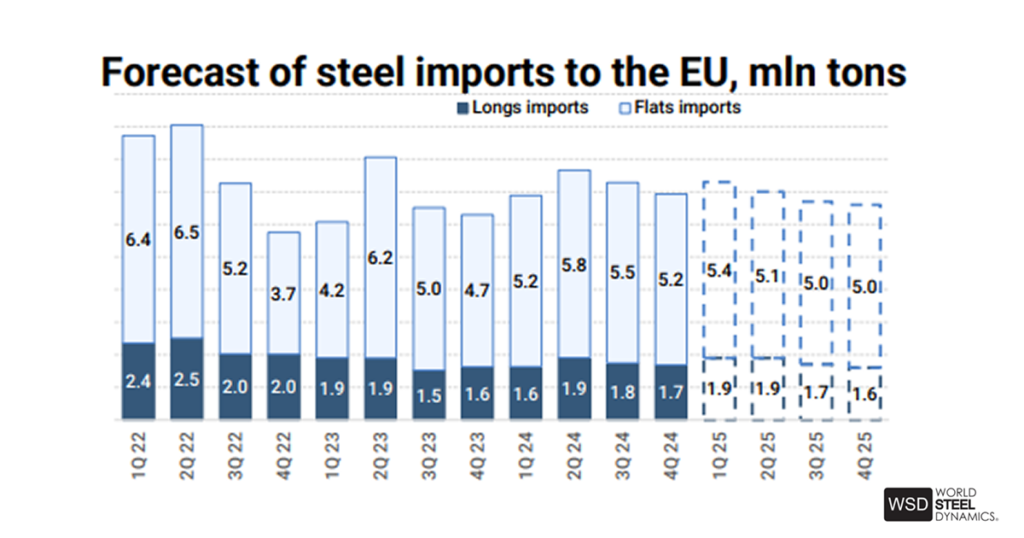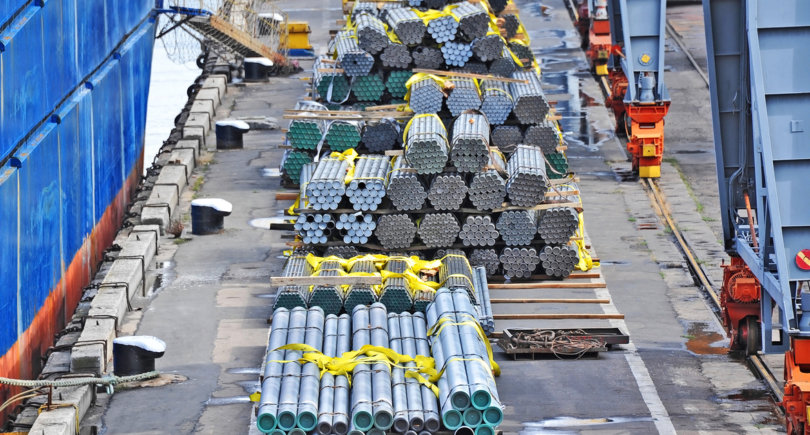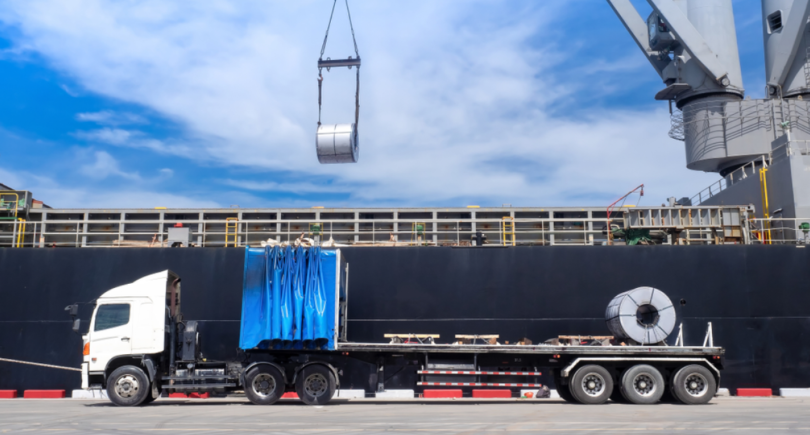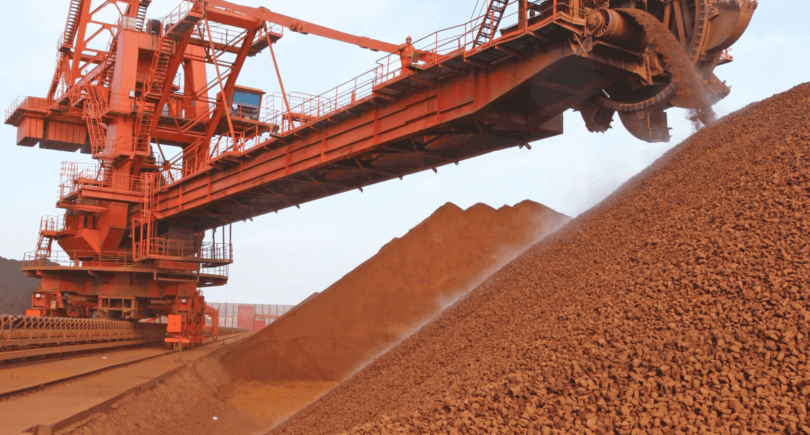
News Global Market EU 1407 21 February 2025
Import restrictions and possible US tariffs may significantly impact steel supplies to the EU
In 2025, the European steel market may undergo significant changes due to new trade restrictions and potential US tariffs.
These forecasts were presented by the analytical company World Steel Dynamics (WSD) in its February report for the EU Steel Dynamics Reports and Analytics Service.
Analysts predict that flat steel imports to the EU could decrease by 25% in Q2, 2025 compared to Q1, which would mean a reduction in supply by approximately 2 million tons. This, in turn, could affect price dynamics and the balance of supply and demand.

Expected January steel import volumes are estimated at 3.8 million tons, up 11.8% year-on-year, while in Q4 2024, shipments increased by 9.5% y/y but declined by 5.5% quarter-on-quarter – to 6.9 million tons. However, considering the possible review of tariff rate quotas (TRQ), imports may decline further. A 15% cap on specific product categories is expected, which could lead to a 15-20% reduction in cold-rolled coil (CRC) imports and a 40-50% drop in hot-dip galvanized coil (HDGC) imports.
At the same time, the import structure is shifting. Producers and traders are stockpiling inventories ahead of the new quota regulations taking effect, which will sustain high import volumes in Q1 2025 (forecast: 7.3 million tons). However, in Q2, new restrictions and a potential decline in shipments from Asia and Turkey could significantly reduce import availability to approximately 7 million tons.
Another crucial factor affecting EU steel imports is the US trade policy on tariffs. If President Donald Trump’s administration decides to impose a 25% tariff on European steel imports, it could reduce EU steel exports by 4 million tons. Approximately 2.1 million tons of this volume accounts for flat steel products.
Such a measure could lead to a surplus of supply in the European market, which, in turn, would limit price increases. At the same time, a decline in imports to the EU could partially offset this effect, though overall market uncertainty will remain high.
You can subscribe for a trial version of the EU Steel Dynamics Reports and Analytics Service via the following link.




